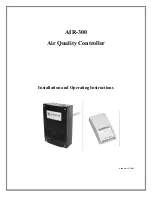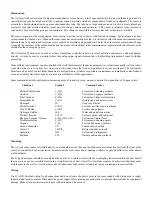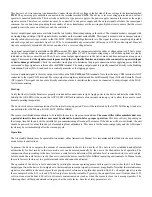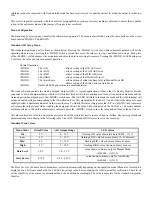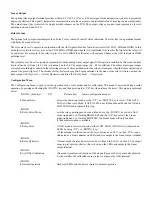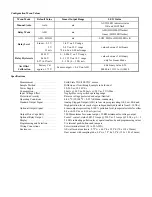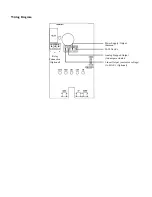
saturated (cannot be improved with fresh air intake) and the base level is raised to equal the current level and the output is set back to
OK.
This cycle is repeated constantly, with the base level being updated as soon as a lower air reading is obtained, to ensure the air quality
is kept at the optimum value and that energy efficiency is not sacrificed.
Menu Configuration
The menu may be accessed any time after the initial warm-up period. The menu is controlled by using the three buttons on the circuit
board labeled MODE, UP and DOWN.
Standard ASO Setup Menu
The standard setup menu has five items as shown below. Pressing the <MODE> switch once while in normal operation will set the
operating mode to step 1, pressing the <MODE> switch a second time saves the value set in step 1 and advances to step 2. Each press
of the <MODE> switch advances the menu item and saves the previous setting to memory. Pressing the <MODE> switch during step
5 will save the value and return to normal operation.
Normal Operation
<MODE>
1. Set OK
- allows setting of the OK ASO level
<MODE>
2. Set LOW
- allows setting of the LOW ASO level
<MODE>
3. Set MID
- allows setting of the MID ASO level
<MODE>
4. Set HIGH
- allows setting of the HIGH ASO level
<MODE>
5. Set Base/Scale
- allows setting of either the Base level in Manual Mode OR
allows setting of the Scale Factor in Auto Mode
<MODE>
Flashes all LEDs and returns to normal operation
The standard menu controls the Analog Stepped Output (ASO). A typical application will have the Air Quality Monitor directly
connected to drive a damper actuator with the ASO to allow fresh air into the controlled area. Once all connections are made and the
warm-up period has elapsed, press the <MODE> switch once. The OK LED will flash to indicate the mode and the ASO terminal will
output an analog voltage corresponding to the OK pollution level. This signal defaults to about 2 V and will drive the damper to open
slightly to allow a minimum amount of fresh air into the area. To modify this value simply press the <UP> or <DOWN> key to increase
or decrease the output signal while watching the damper position. The value will be indicated on the LEDs as a 5 bit binary number
for future reference. When this adjustment is complete, press the <MODE> switch to save the value and advance to the next item.
All values entered are saved in non-volatile memory and will be restored correctly in case of a power failure. The factory defaults and
adjustment ranges are shown in the following table. The LOW, MID and HIGH levels are set in the same way.
Standard Menu Values
Menu Mode
Default Value
ASO Output Range
LED Status
Ok
2 V
0 – 10 V
flashing OK, value shown in binary 00000 – 11111
Low
4 V
0 – 10 V
flashing LOW, value shown in binary (0 –31 decimal)
Mid
6 V
0 – 10 V
flashing MID, value shown in binary as above
High
8 V
0 – 10 V
flashing HIGH, value shown in binary as above
Base Level
1.8 V
1.0 – 3.5 V
value shown in binary, only for Manual Mode
(0)00000 – (1)11111
Scale Factor
0.12 V
0.05 – 0.36 V
value shown in binary, only for Auto Mode
(0)00001 - (1)11111
The Base Level or the Scale Factor menu item is selected automatically depending on the operation mode (Manual or Auto) and is
displayed as a 6 bit binary number on the 5 LEDs. The voltage value is also output on the ASO terminal for verification. These levels
set the sensitivity of the sensor to contaminants and can be adjusted accordingly. The setup is complete for the standard Air Quality
Monitor.

